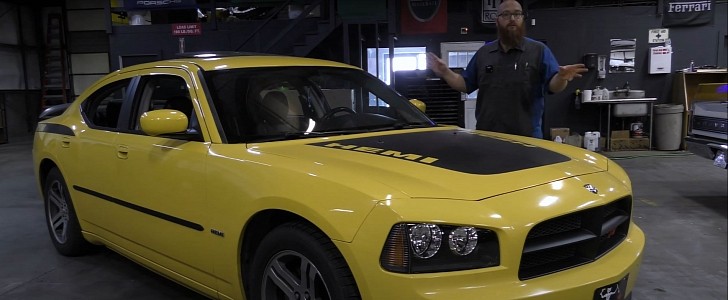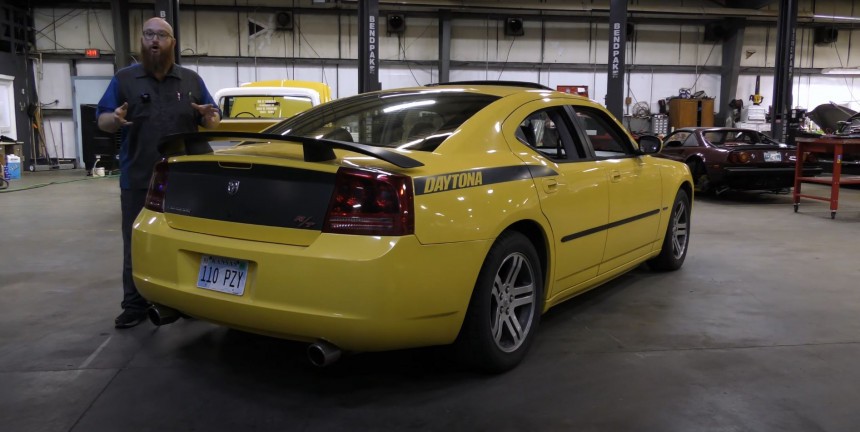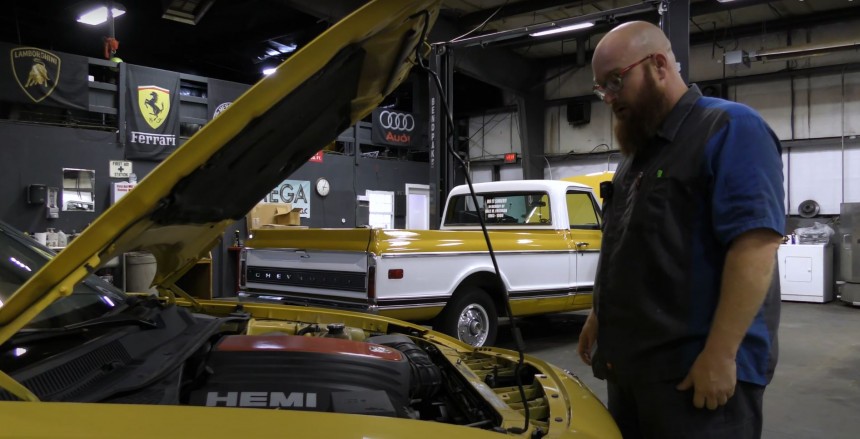Buying a car is more often than not a stressful process. You either go with the flow and assume a seller is an honest person, or you can try to negotiate to visit an authorized service center for a thorough check before signing anything. But you’re here! So, you can follow this mechanic’s advice to avoid unnecessary charges and car-buying headaches.
Having a car in the U.S. is a necessity. Other than flying, there are not that many good options when it comes to public transport. Maybe that will change in the future, but until then, almost any individual or family has to buy a vehicle.
On top of that, we’re going through some tough times right now. The economy is not growing, inflation is barely showing any signs of slowing, and problems continue to persist at a national and global level. It is this uncertainty that makes most Americans think twice before making a purchase or getting into a new lease. If you’re in the market for a car or a truck, then the option you’re left with is getting something that’s already been used by someone else.
Buying any product without a warranty or any customer protection options is, in most cases, a gamble. Vehicles are complicated machines, and that can only enhance worries. But this mechanic offers us four major tips that can help.
The well-known mechanic says the first thing you need to check is the title and the relevant paperwork. According to him, you shouldn’t look under the hood or sit inside until you can see the name of the seller matches what’s written on the title. This is how you can avoid buying a stolen vehicle. The next thing is looking for a lean. If a bank has one on the car, then you must pay it in full before becoming the rightful owner.
The YouTuber also underlines that it’s important to look for the following terms on the title – “junk,” “salvage,” or “nonhighway.” Any of these words suggest that something’s wrong with the vehicle, and the buyer might find out after paying for it that it can’t be registered.
“No title, no deal” is a principle this mechanic has followed throughout his life, and it has saved him a lot of trouble. That’s why you shouldn’t buy a car without a title (in states where having one is mandatory) or listen to someone that promises to send you the document later.
The mechanic says that after the exterior check is completed, the prospective buyer should look under the hood. If you don’t have any car-related experience, then you should look for visible oil leaks, cracked or broken parts, the antifreeze level, and possible missing pieces. If you don’t want to be surprised, then you can check beforehand online what the engine bay of the vehicle you’re going to buy should normally look like. Nobody’s going to be mad if you want to make a comparison on the spot, so save the image on your phone or print it.
It would also be a good idea to have a mirror and a flashlight on you. These two simple tools will allow you to take a better look at things.
Car Wizard also recommends you take off the engine cover. If the seller refuses, you should back out of the deal. That’s how you can see if there were wild animals in there. If there are such signs, then most likely, some cables have been chewed up. That’s a repair that you don’t want to do.
The next step is looking at the levels of various liquids. Mind you, this must be done only when the engine is cold. Otherwise, the temperature and the pressure these liquids are under can lead to accidents. The coolant housing, for example, has a minimum and a maximum level that are marked as “MIN” and “MAX.” If the liquid is below the minimum, then that’s a problem.
If everything’s alright, then open these containers and look inside. The liquid shouldn’t be gunky or dirty.
Don’t forget to look at the braking fluid. It shouldn’t be black, and it has to be full.
Moving on, checking the oil is simple. Just pull the dipstick and look at the level. If it’s below “safe,” then the car might burn or lose oil. Some vehicles, like newer BMWs, don’t come with dipsticks anymore. To check the oil level, you must use the infotainment system.
While the hood is still open, peek at the radiator condenser. Look for leaks and damages.
At this point, it’s time to get inside and start the engine. Listen for knocking or ticking or other noises under the hood. Rattling is also something to consider. At the same time, you should check the rear and see if there’s smoke coming out the exhaust. There shouldn’t be any clouds coming out of the tailpipes.
Once inside, check the electronics. Look at the interior lighting, the dashboard, and the infotainment. Check the sound system, the windows, the power mirrors, the power seats (if it has them), and the locking mechanism.
Similarly, if the vehicle has a sunroof, then make sure it works properly.
If you got over this step as well, then start driving. Here you must check the acceleration, the braking, the way the car shifts, the suspension, and the driver assistance systems. Also, make sure the vehicle doesn’t pull to one side or the other. That might indicate issues with alignment, the steering rack, the wheel bearing, or the tires.
The last step that’s part of the checking process is finishing the purchase. Don’t be ashamed to bargain if the seller wants too much. You can always go online and see what similar models go for. If there’s something wrong with the vehicle, but you’re willing to fix it, then ask for a discount.
If both parties reach an agreement, then sign the papers, pay, and drive off. That’s it! You’re done!
On top of that, we’re going through some tough times right now. The economy is not growing, inflation is barely showing any signs of slowing, and problems continue to persist at a national and global level. It is this uncertainty that makes most Americans think twice before making a purchase or getting into a new lease. If you’re in the market for a car or a truck, then the option you’re left with is getting something that’s already been used by someone else.
Buying any product without a warranty or any customer protection options is, in most cases, a gamble. Vehicles are complicated machines, and that can only enhance worries. But this mechanic offers us four major tips that can help.
Listen to the experts
Car Wizard is known for its transparent and blunt approach when it comes to fixing cars. He may have started a YouTube side hustle, but the man is sharing with his followers only things that matter or curiosities that help enthusiasts.The well-known mechanic says the first thing you need to check is the title and the relevant paperwork. According to him, you shouldn’t look under the hood or sit inside until you can see the name of the seller matches what’s written on the title. This is how you can avoid buying a stolen vehicle. The next thing is looking for a lean. If a bank has one on the car, then you must pay it in full before becoming the rightful owner.
“No title, no deal” is a principle this mechanic has followed throughout his life, and it has saved him a lot of trouble. That’s why you shouldn’t buy a car without a title (in states where having one is mandatory) or listen to someone that promises to send you the document later.
Checking the car
Right off the bat, after the paperwork hurdle has been cleared, you should do a calm visual inspection and check the exterior for any dents, rust, or poorly hidden damages. Also, you must pay attention to the paint. It must match all the parts. Otherwise, it might hide a nasty surprise. Even hail dents can become a problem.The mechanic says that after the exterior check is completed, the prospective buyer should look under the hood. If you don’t have any car-related experience, then you should look for visible oil leaks, cracked or broken parts, the antifreeze level, and possible missing pieces. If you don’t want to be surprised, then you can check beforehand online what the engine bay of the vehicle you’re going to buy should normally look like. Nobody’s going to be mad if you want to make a comparison on the spot, so save the image on your phone or print it.
It would also be a good idea to have a mirror and a flashlight on you. These two simple tools will allow you to take a better look at things.
Car Wizard also recommends you take off the engine cover. If the seller refuses, you should back out of the deal. That’s how you can see if there were wild animals in there. If there are such signs, then most likely, some cables have been chewed up. That’s a repair that you don’t want to do.
The next step is looking at the levels of various liquids. Mind you, this must be done only when the engine is cold. Otherwise, the temperature and the pressure these liquids are under can lead to accidents. The coolant housing, for example, has a minimum and a maximum level that are marked as “MIN” and “MAX.” If the liquid is below the minimum, then that’s a problem.
Don’t forget to look at the braking fluid. It shouldn’t be black, and it has to be full.
Moving on, checking the oil is simple. Just pull the dipstick and look at the level. If it’s below “safe,” then the car might burn or lose oil. Some vehicles, like newer BMWs, don’t come with dipsticks anymore. To check the oil level, you must use the infotainment system.
While the hood is still open, peek at the radiator condenser. Look for leaks and damages.
At this point, it’s time to get inside and start the engine. Listen for knocking or ticking or other noises under the hood. Rattling is also something to consider. At the same time, you should check the rear and see if there’s smoke coming out the exhaust. There shouldn’t be any clouds coming out of the tailpipes.
A couple more things...
If that went according to plan, the next step recommended by the mechanic is to use a code reader and see if any faults are coming up on the device. You can borrow or buy one. It usually doesn’t cost more than $50, and it can spare you a lot of problems down the road.Once inside, check the electronics. Look at the interior lighting, the dashboard, and the infotainment. Check the sound system, the windows, the power mirrors, the power seats (if it has them), and the locking mechanism.
Similarly, if the vehicle has a sunroof, then make sure it works properly.
If you got over this step as well, then start driving. Here you must check the acceleration, the braking, the way the car shifts, the suspension, and the driver assistance systems. Also, make sure the vehicle doesn’t pull to one side or the other. That might indicate issues with alignment, the steering rack, the wheel bearing, or the tires.
The last step that’s part of the checking process is finishing the purchase. Don’t be ashamed to bargain if the seller wants too much. You can always go online and see what similar models go for. If there’s something wrong with the vehicle, but you’re willing to fix it, then ask for a discount.
If both parties reach an agreement, then sign the papers, pay, and drive off. That’s it! You’re done!









